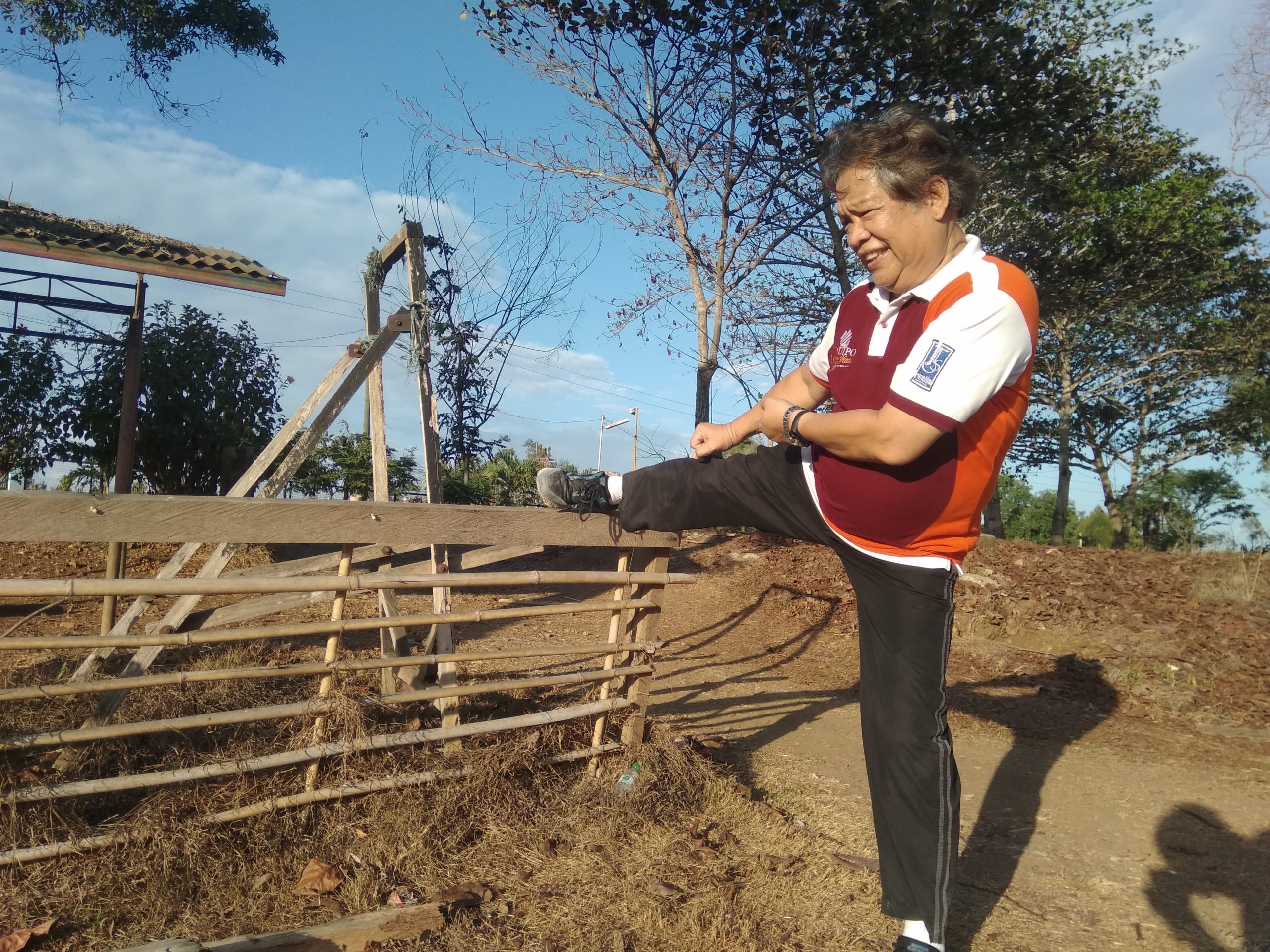Beyond 10,000 Daily Foot Steps: A Positive Health Consequence of COVID-19?
Summary
If one walks 10,000 steps per day, that person could be burning enough calories to lose weight. After trying this technique for 140 days – from 13 January 2020 to 31 May 2020 – I have attained a daily average of 10,075 steps. The consequence: I lost 6 kilos! I intend to maintain this daily average and combine it with a healthier diet. Hopefully, I shall lose more unwanted weights by the end of this COVID-19 pandemic.
After 140 days – from 13 January 2020 to 31 May 2020 – I have finally won, albeit barely! The challenge: attain an average of 10,000 daily footsteps. The result: I attained a daily average of 10,075 steps. How did I get into this footsteps imbroglio? Let me narrate how it all began. (In this essay, the terms footsteps and steps are used interchangeably.)
When international media started reporting the news about the corona virus disease 2019 (COVID-19) in January 2020, Zarina Hannah (our 25-year-old unica hija whom we fondly call Hannah) was still in Metro Manila, Philippines (Figure 1). A registered nurse, she is a full scholar pursuing her medical degree at Flinders University in Australia, and at that time was on a school break. She has been badgering me for being overweight, and has been cajoling me to do something pro-active about my health. At that time, I weighed 85 kilograms (kg); my ideal weight given my body frame and 5 feet and 7 inches height is only 63 kg. Hence, that was a whooping excess of 22 kg!

Figure 1. Hannah and the author as her pot-bellied Dad at Manam Restaurant in Greenhills, San Juan, Metro Manila, Philippines.
Hannah argued that since I cannot control my appetite, I will not lose weight and reduce the nine maintenance medicines that I take everyday. These consist of drugs for blood pressure, cholesterol, diabetes, gouty arthritis, heart ailment and triglyceride. She reiterated that the only way to lose weight is to do more physical activities and/or be more mobile throughout the whole day. Most weight loss programs recommend burning around 300 calories per day in moderate to vigorous exercise. If one walks 10,000 steps per day, that person should be burning enough calories to lose weight, assuming he/she does not frequently overeat. Apparently, the medical rationale behind 10,000 steps per day originated in Japan.
Before we parted ways on 12 January 2020, Hannah left me an electronic gadget. It was a black-colored pedometer: an instrument for estimating the distance traveled on foot by recording the number of steps taken. She challenged me to attain 10,000 steps a day, which is the emerging norm to at least stabilize the weight at its current level. I braggingly reacted that I could easily do it. We have made a verbal father-and-daughter deal that she would see a slimmer Dad when we meet again in Manila on 20 June 2020. (That date was the wedding schedule of Mikhail Robert, our eldest son.) I was so confident that I could easily attain an average of 10,000 steps/day; after all, I love to do leisurely walks. Upon arrival in Puerto Princesa City (PPC), I wore it on my left wrist around the midnight of 13 January 2020.
At that time that I had made such a commitment, I miserably failed to consider two critical factors. First, I hugely underestimated the distance to be covered. Little did I know that 10,000 steps are equivalent to between 4 to 5 miles. In terms of metric measurement then – assuming I am practically sedentary the whole day – I have to literally walk between 6.5 to 8 km daily just to attain the damn 10,000 steps! Secondly, I had failed to factor in my physical limitations. Although I have no problem in walking, I have ‘gimpy’ knees. Both knees have been affected by osteoporosis and gouty arthritis. Thus, my two orthopedic (bone specialist) doctors have the same advice: walk leisurely although I can walk as long as I want, or up to the extent that my knees could hold. They said that swimming is the best but it requires a pool or access to a clean beach area, which is not possible during this COVID-19 quarantine restriction. Prohibited strenuous activities include jumping, martial arts and running.
Rather than make excuses or dwell on my physical limitations, I decided to tackle the challenge head-on. I have been inspired by the philosophy of Jack Ma that if you want to attain your goal, you don’t complain. (Jack Ma is the richest Chinese who is the co-founder and former executive chairman of Alibaba Group, a multinational technology conglomerate.) I currently work as the Dean and a Professor of the Graduate School (GS) of Palawan State University (PSU). After my evening class or administrative duties, I began walking around PPC’s Central Business District (CBD). I was quite jubilant during my first week (13-19 January 2020) as my average was 10,498 footsteps. I told my daughter that I was winning, as I already gained an extra 3,486 steps.
But the celebration was short-lived when I went to undertake trainings and field works from 20-30 January 2020. We went to the Island of Cuyo by boat, and exited in Iloilo City also by ferry transport. With the change in work setting, I easily backslided to the old ways: practically eating daily smorgasbord and got lazy walking around. Within these 11 days, my daily average went down to 6,673 steps. Thus, I had a daily deficit of 3,327 steps. From a positive situation, it suddenly turned into a huge deficit of 36,597 steps during that eleven-day period!
I started to panic but likewise re-oriented myself to be more conscious and realistic starting 01 February 2020. I devised the rule of ‘5-2’ on any given week. It means that every week, I shall allot 5 days to attain 12,000+ steps. The extra 2,000+ steps shall cover whatever deficit that I may incur during my 2 days as ‘off’ days. During these off days, I do pleasurable chores without feeling guilty: resting as much as I want to allow my body to recover; engage in volunteer works; and attend to unscheduled family and social commitments. I even allow myself a maximum of 5 cheat meals/week! These include buffet dinner during Rotary International Fellowships every Thursday and buffet breakfast during Christian Fellowships on Saturday morning.
Allow me to briefly describe the footsteps statistics over the last four months during the COVID-19 pandemic (Box 1). Although I have exceeded the 10,000 average (statistically called as the mean), the difference is razor thin. Simply told, over the last 140 days, I only gained an extra total of 10,482 steps. Since the median (11,550) is greater than the mean (10,075), it indicates that over 50% of my walking days recorded more than 10,000 steps. Nonetheless, there is a wide range of 16,000 steps. The minimum (1,200 steps) indicates just doing nothing or simply being desk-bound for the whole day. The maximum (17,200 steps) means I practically spent about four hours of walking.
[supsystic-tables id=4]
I literally forced myself to maximize my physical movements during the PPC’s Extended Community Quarantine (ECQ) from 13 March 2020 to 30 April 2020. These included walking around the house’s compound, washing clothes, practicing dance steps with an imaginary partner, throwing out garbage at night, and running errands for my wife. I did virtually everything that would make me physically active to register a footstep in the pedometer. On occasions, I served as the Officer-of-the-Day as GS skeleton force. I used part of the time to dribble alone a basketball around the deserted gym (Figure 2). Since the PSU guards never saw me exercising before, they must have thought that the GS Dean may have been inflicted with COVID-19 virus, and thus, has gone berserk!

Figure 2. Author dribbling basketball at school gym in Puerto Princesa City, Palawan, Philippines.
During the General Community Quarantine (GCQ) in May 2020, I visited the unused area at the public place called as Balayong Park near our residence. I also walked around its vicinity for a variation of a scenery. This activity gave a bonus of enabling my mind to freely wander and crystallize my thoughts and ideas. Overall, from 13 January 2020 to 31 May 2020, it was a ‘roller coaster’ of walking intensively and being a couch potato. At its peak, I managed to walk for four hours that registered 17,200 steps. At my worst, I only got 1,200 steps as a desk-bound academic.

Figure 3. Author stretching at a makeshift fence at Balayong Park in Puerto Princesa City, Palawan, Philippines.
But there are two bottom line results that I am truly proud of. First, I exceeded the daily average target of 10,000 steps. In the beginning, I never seriously thought I could do it. (Truth be told, I entertained the thought of simply backing out and simply swallowing my pride!) Secondly, from the health perspective, I lost 6 kg. I am still 16 kg overweight. But the original 22 kg overweight less 6 kg in times of COVID-19 pandemic is not that bad. The pandemic period has likewise given me more thought about the true value of health. The legendary CEO of Apple, the late Steve Jobs, once said that all of us have only one book to write – and that is the ‘Book of Health’. If Steve Jobs, who was one of the richest man in the world had recognized that our health is our most important asset, who are we as lesser mortals to argue with that? The main price I have to pay for such health is time. I need to allot at least 2.5 hours walking or actively moving around.
Hannah is unlikely to be back to the Philippines within 2020 due to international travel restrictions. In the meantime, I intend to maintain the daily average of 10,000+ steps. And maybe – just maybe – I could also slowly control my appetite. Assuming I could maintain the daily average of 10,000+ steps and combine it with a healthier diet, she would surely be happy seeing a healthier Dad, and not the old pot-bellied one (see Figure 1 again), the next time around.



Good job Mike. I know it takes commitment and dedication to lose some weight. I have not been able to go to the gym/fitness center since March because they were all shut down. Gyms were reopened briefly for two weeks late June but due to increasing cases of covid they were shut down again. Glad I have a dog which forces me to go to walk twice a day plus little work out inside the house. Keep it going Mike you’re doing great.
Hi Sir Leandro,
I have finally found this feedback of yours. Thank you for your continuing interest in my articles feedback.
Best regards,
Mike
Five cheat meals??? I want the PIDOmeter!
Thanks for your feedback DCOP Mar. They all love your musings about the PIDOfiles!!!
Congrats Doc Mike!
10,000 reasons to celebrate healthy life.
Be safe!
Hi Leah – Thanks for your positive feedback. I have been able to maintain the daily average of 10,000+ footsteps. What I have not able been to control is my appetite. Still too many cheat meals!
I am commenting to make you be aware of what a wonderful discovery my cousin’s child developed reading through the blog. She noticed a wide variety of details, not to mention how it is like to possess an incredible coaching mindset to have many others with ease fully grasp chosen complicated subject areas. You undoubtedly did more than people’s expectations. I appreciate you for distributing the priceless, dependable, informative not to mention cool tips on your topic to Lizeth.
Am glad that you’ve found the content of my blog useful.
I do not even know how I ended up here, but I thought this post was great. I do not know who you are but certainly you’re going to a famous blogger if you aren’t already 😉 Cheers!
Thank you so much for liking my blog. I am just an ordinary blogger. Hopefully, your prediction that I will become a famous one will come true! Best regards.
Hello. impressive job. I did not expect this. This is a great story. Thanks!
Thank you for sharing superb informations. Your web site is very cool. I am impressed by the details that you have on this site. It reveals how nicely you perceive this subject. Bookmarked this website page, will come back for extra articles. You, my friend, ROCK! I found just the info I already searched all over the place and just could not come across. What a perfect site.
Thank you for finding my site informative. You may read my 59th birthday blog through this link https://huescribbler.com//on-200-birthday-anniversary-greeters-who-enlivened-my-last-junior-year-celebration/
Wonderful website you have here but I was wondering if you knew of any message boards that cover the same topics talked about in this article? I’d really like to be a part of group where I can get feedback from other experienced people that share the same interest. If you have any recommendations, please let me know. Thanks!
Hi there! Let me ask my support group about the message board. Meantime, please read my 59th birthday blog through this link https://huescribbler.com//on-200-birthday-anniversary-greeters-who-enlivened-my-last-junior-year-celebration/